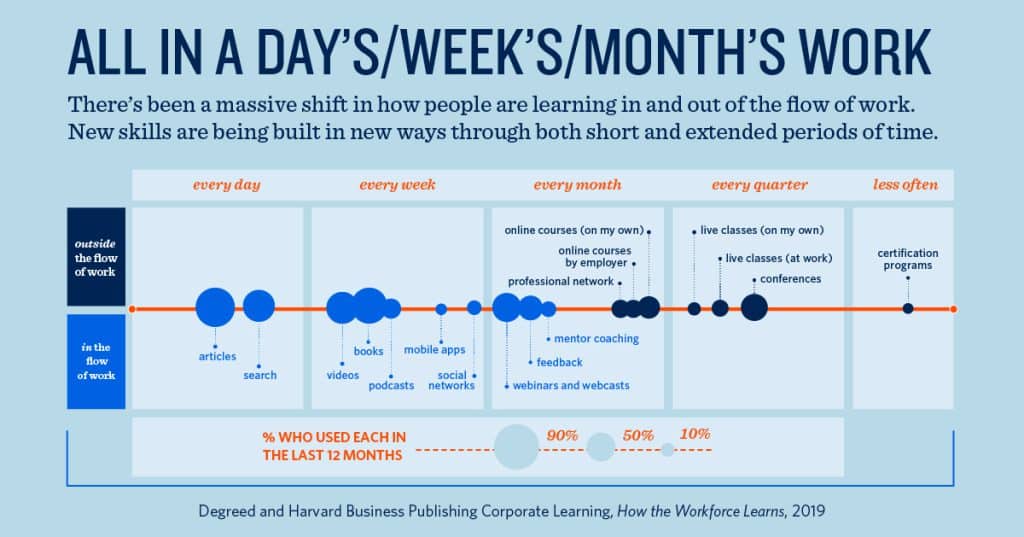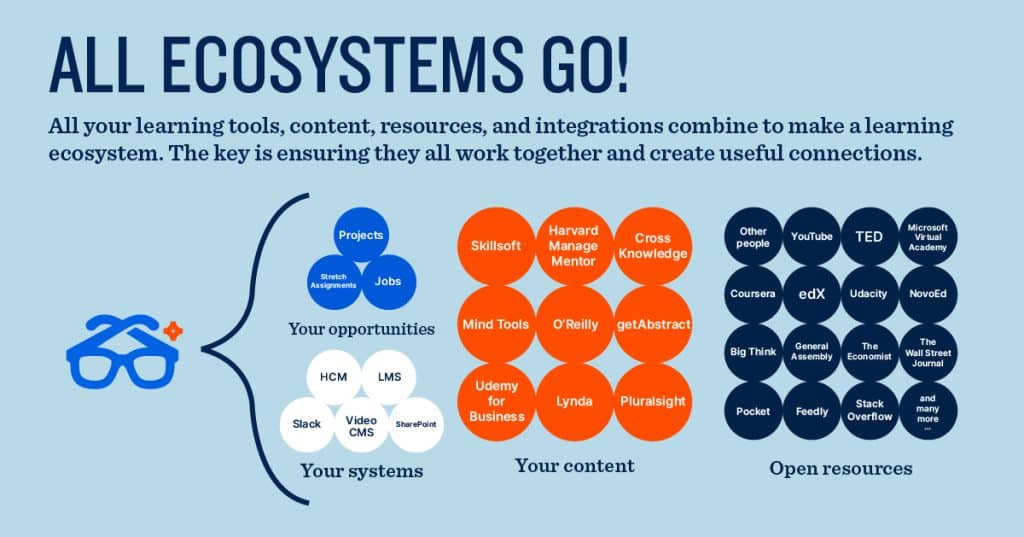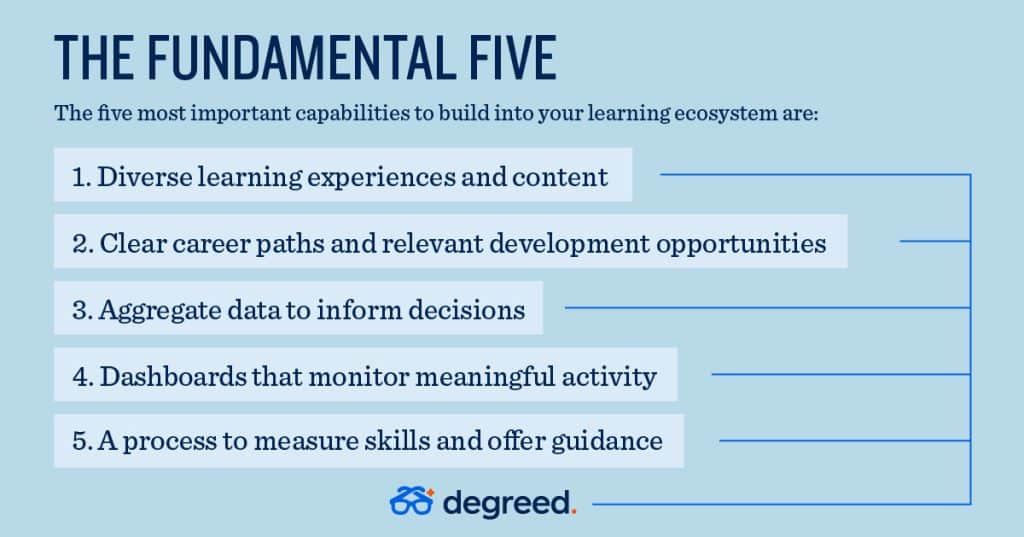We’ve spent a lot of time with clients, at conferences, reading industry research, and combing through blogs. Through it all, one phrase we keep hearing in regards to the current state of corporate learning is “out of sync”. In fact, in a recent survey of workers and managers we conducted with Harvard Business Publishing, the average net promoter score our respondents gave their current corporate learning program was a -33 (on a scale from 100 to -100). That’s enough for anyone to make the grimace emoji face.
Our research certainly supports the idea that corporate learning strategies and employees could be out of sync. And here’s what we know for sure: there’s a massive shift happening in the way people are learning on the job and in the flow of work.

The fact is, most workers are dedicating time to learn every day and they’re doing that in all kinds of ways — not just periodically, in courses or classrooms. To help, L&D should be promoting and enabling self-directed development and formal training through both micro- and macro-learning.

Equally as important, we as people leaders ourselves have to make the vast array of learning content and experiences more meaningful by curating the right resources and tools, providing context, and engineering useful connections and interactions. We call this combination of capabilities and integrations a learning ecosystem.
Your next question might be: what should I look for and build out in this comprehensive solution? So let’s start with the five most important capabilities to look for in your learning ecosystem:
- Diversity of learning content (user-generated content, social learning, articles, videos, classes, etc.) and experiences (e.g. connections to people, projects and jobs).
- Motivation from recommendations, clear career paths, relevant development opportunities, and feedback. This should encourage users to explore new skills autonomously.
- Generate data and insights from your entire organization to help identify patterns and inform business and HR decisions.
- Dashboards that monitor meaningful activity around skills data and offer more insight beyond just completions.
- A process to measure the skills of your current workforce and offer guidance on where your people need to develop. With this visibility, employees will have more opportunities for internal mobility and administrators will be able to find the right people with the right skills for new projects and beyond.

Perhaps most importantly, all the software you choose to utilize should embrace APIs to ensure all your existing and future tools will integrate together. According to a survey conducted by the Brandon Hall Group, learning technology buyers’ largest complaint was around the “ability to meet future needs.” Ensuring your chosen platform can integrate with future additions as they evolve relies on its ability to embrace APIs.
Today people expect utility, relevance, and personalization from their learning strategies, and you can create that through a comprehensive learning ecosystem. There is no magical one-size-fits-all solution, but platforms like Degreed help integrate and enable the needs of both your organization and its individual workers — allowing organizations to meet the demands of a changing workforce.
Want to learn more about how Degreed can help you revolutionize your company’s learning strategy? Talk to one of our representatives today. Or not quite sure where to begin with building a learning ecosystem? Start by downloading our Guide to Talent Development Technology here for insight into the crowded tech marketplace, templates to build a business case for your learning technology, and more!

